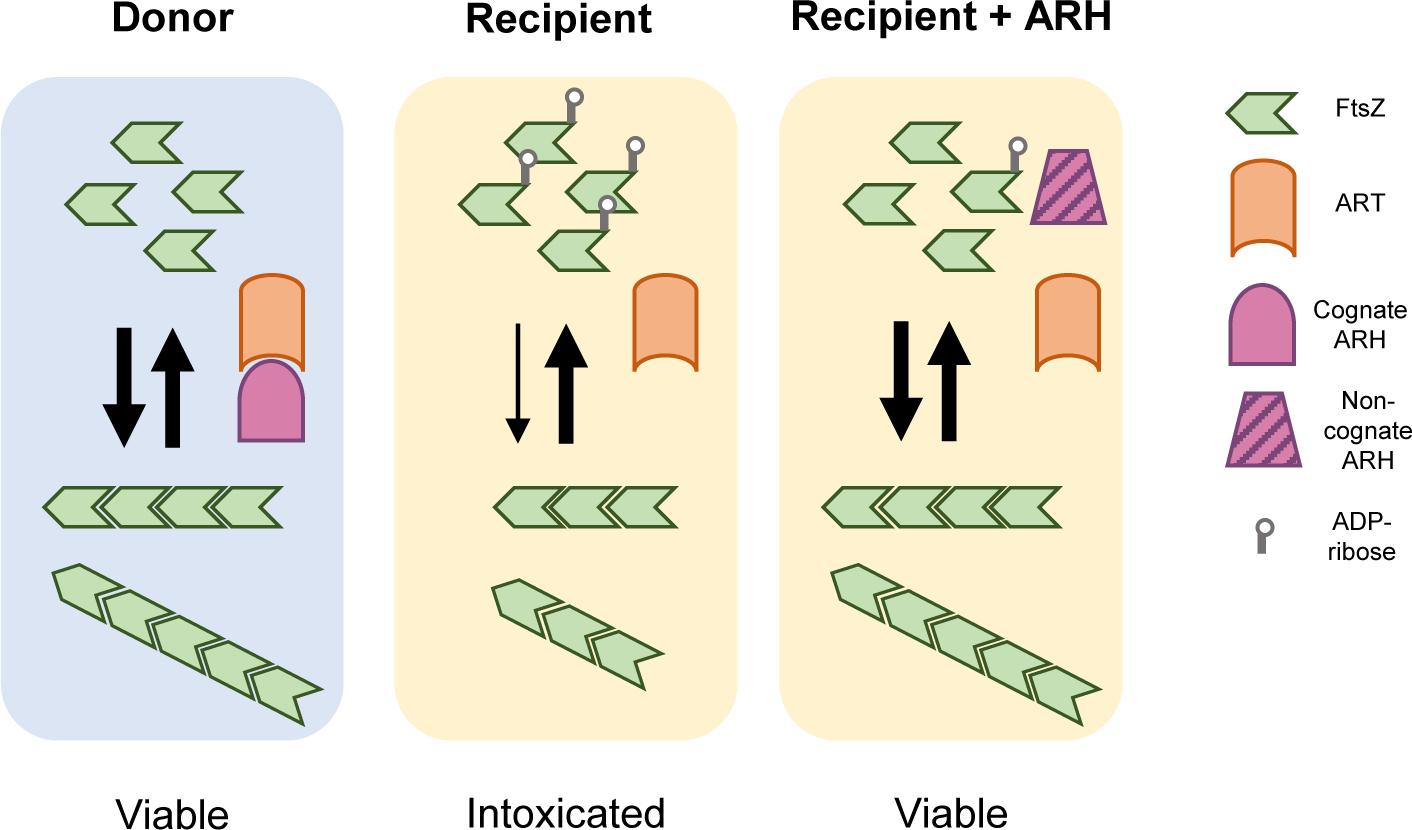ART/ARH enzymes modulate FtsZ assembly.

The cellular FtsZ pool exists in two states: unpolymerized monomers and treadmilling filaments. Although donor cells (blue background) encode a toxic ADP ribosyltransferase (ART) effector capable of introducing a toxic adduct on FtsZ, they also encode a cognate ADP hydrolase (ARH) immunity protein, which neutralizes effector activity enzymatically and physically. ART translocation into recipient cells (yellow background) results in ADP-ribosylation of FtsZ monomers, leading to impaired polymerization, cell division failure, and intoxication. However, some recipient cells encode a non-cognate, promiscuous ARH enzyme and are able to hydrolyze the toxic modification, restoring wild-type FtsZ assembly dynamics and broadly protecting against ART activity.
